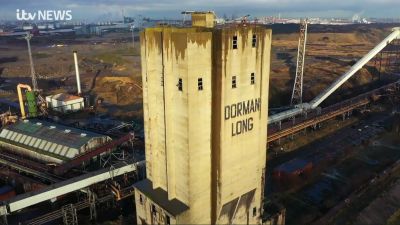Redcar's Dorman Long Tower granted Grade II listed status amid demolition plans

A council meeting is taking place today (13 September) to discuss the future of Teesside's historic Dorman Long Tower after the news that it has been granted Grade II listed status by Historic England.
On the day Redcar and Cleveland Council gave the go-ahead to demolish the 1950's tower on the former steelworks site, Historic England confirmed it has listed the building at the eleventh hour.
Leader of the council, Mary Lanigan, says she will be meeting with the planning team and other stakeholders to discuss how to move forward.
Plans for demolition were given the green light after an independent study into the structure revealed "ongoing and irreversible damage" to the tower that would cost millions to fix and maintain.
What is the significance of the Dorman Long Tower?
History of the tower
History of the tower
In the 19th Century, Teesside saw a huge development of the iron and steel industry, starting at what was then the new town of Middlesbrough in the 1840s and then along the south bank of the Tees.
Using the iron ores of the Cleveland Hills, Teesside's steel industry became one of the world's biggest producers of iron and steel. In the 1880s, it represented a third of Britain’s total production.
Dorman, Long and Company was established as a partnership between Arthur John Dorman and Albert de Lande Long in 1876.
The company also became an international firm for structural engineering, potentially known best for building the Sydney Harbour Bridge in Australia (1923-1932), and the Tyne Bridge in Newcastle (1925-1928).
The tower itself was built in 1955-1956 and is an early example of Brutalist architecture -typically characterised by the large-scale use of concrete to produce massive, geometric structures. Dorman Long became part of the nationalised British Steel in 1967, and the coke works were replaced in the early 1970s by a new plant.
The tower was retained because of its continued use as a reservoir for firefighting.
Demolition
Demolition
In August 2020, a £150m programme of demolition work for the old Redcar and South Bank steelworks site - now called Teesworks - was unveiled, with the tower, along with the famous Redcar blast furnace, set to go.
Soon after the announcement, heritage groups launched campaigns to save the structure, with Conservative Redcar MP Jacob Young spearheading one effort.
Despite this, on 10 July 2021 it was decided that the building would have to be demolished because of "irreversible damage" making it unsafe, with a pricetag of £7 million - £9 million to fix and maintain.
The council says an independent report by engineers Atkins had found that during its time of non-operation, concrete carbonation has caused the embedded steel reinforcements to corrode, which has resulted in significant cracking and weakening of the concrete, with general age-related wear-and-tear also taking its toll on the tower.
The report also found that even if the millions needed to secure and maintain the site were spent, the tower would still have to be demolished in the next two decades.
Grade II listing
Grade II listing
Listing means there will be extra control over what changes can be made to a building's interior and exterior. Owners will need to apply for Listed Building Consent for most types of work that affect the 'special architectural or historic interest' of the structure.
This means this latest development changes what can legally be done with Dorman Long Tower. A council meeting will be held on Monday (13 September) to discuss how plans will move forward.
Historic England says the building is listed under the Planning (Listed Buildings and Conservation Areas) Act 1990 as amended for its special architectural or historic interest.
According to the Historic England listing page, The Dorman Long Tower is listed at Grade II for the following principal reasons:
Architectural interest:
As a recognised and celebrated example of early Brutalist architecture, a fine example of austere design that simply, yet wholeheartedly expresses its function.
a deliberate monumental architectural statement of confidence by the then newly de-nationalised Dorman Long company in the mid-1950s.
a rare (considered to be nationally unique) surviving structure from the C20 coal, iron and steel industries.
a design which is above the purely functional which also cleverly combines control-room, storage and fire-fighting functions for a state-of-the-art coking plant.
Historic interest:
For its association with, and an advert for, Dorman Long which dominated the steel and heavy engineering industry of Teesside for most of the C20, a leading firm nationally with an international reputation, for example building the Sidney Harbour Bridge.